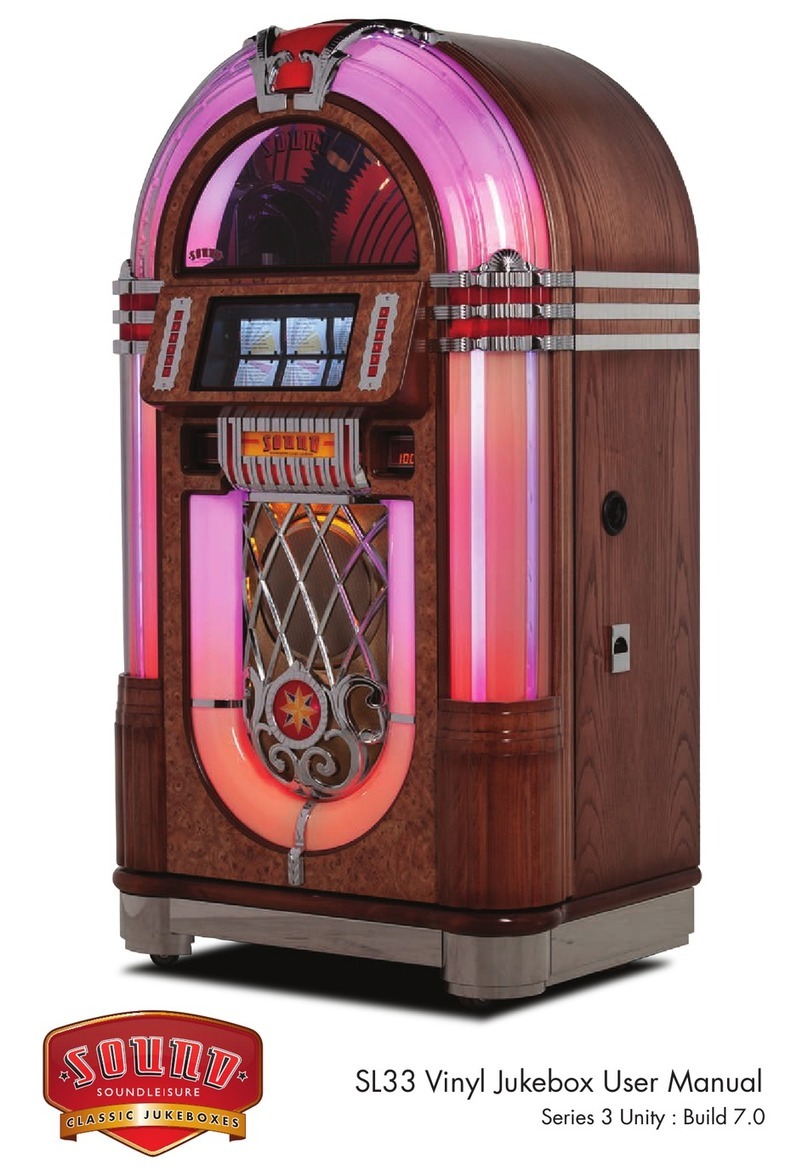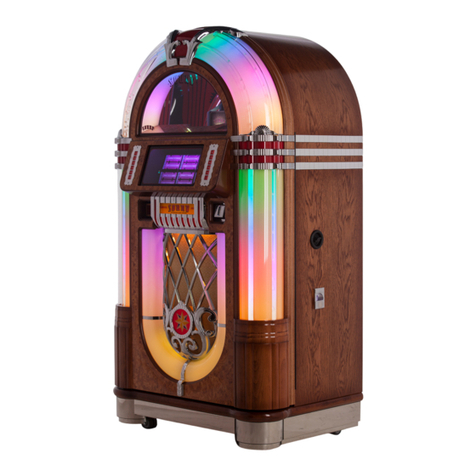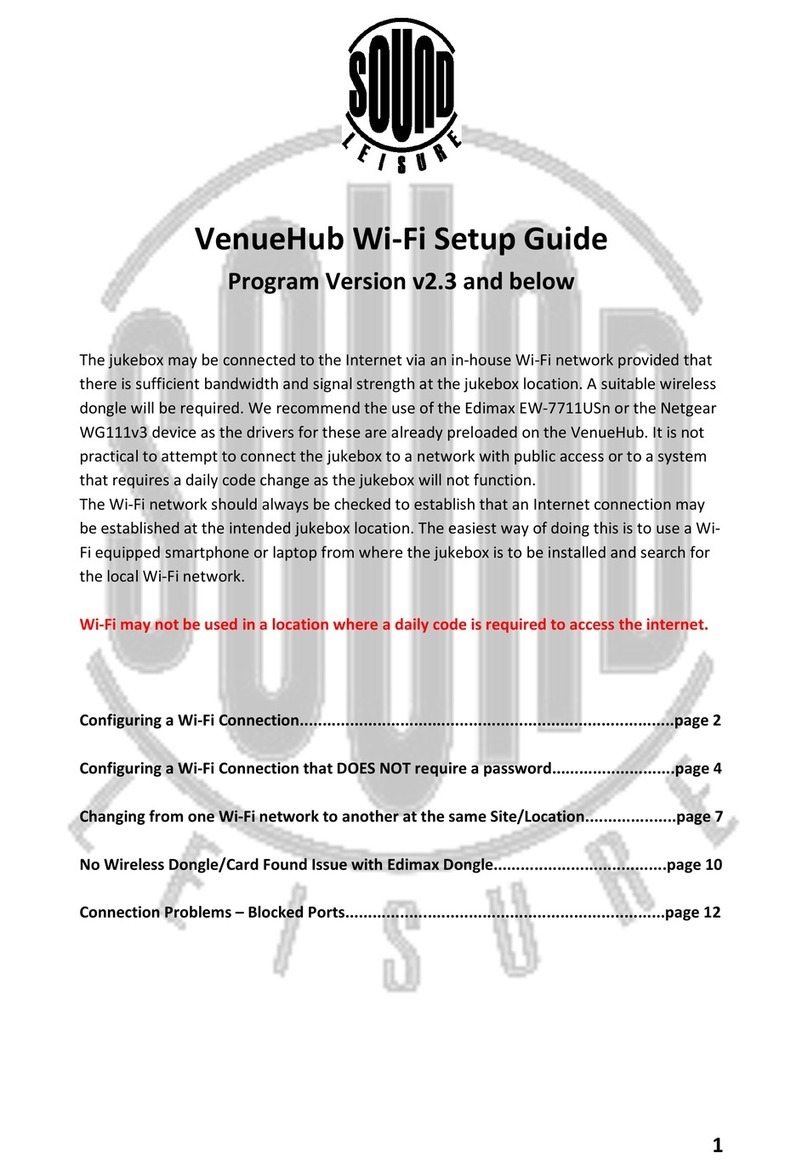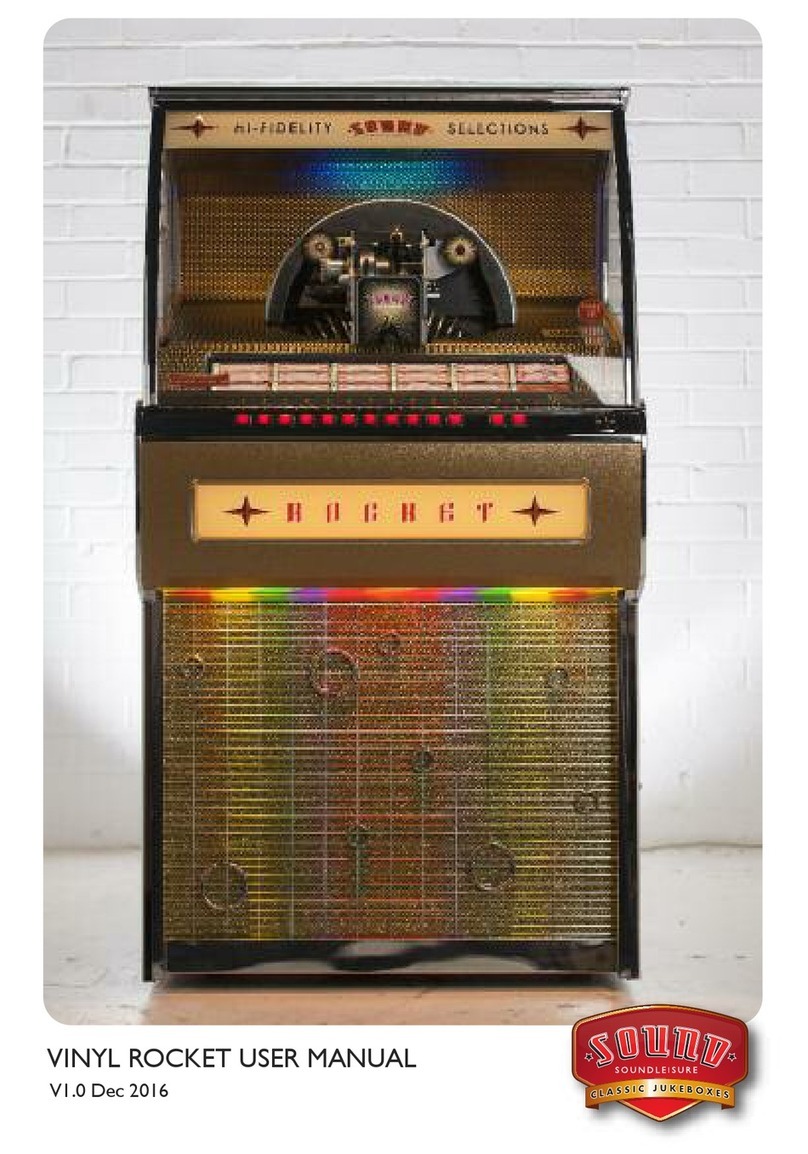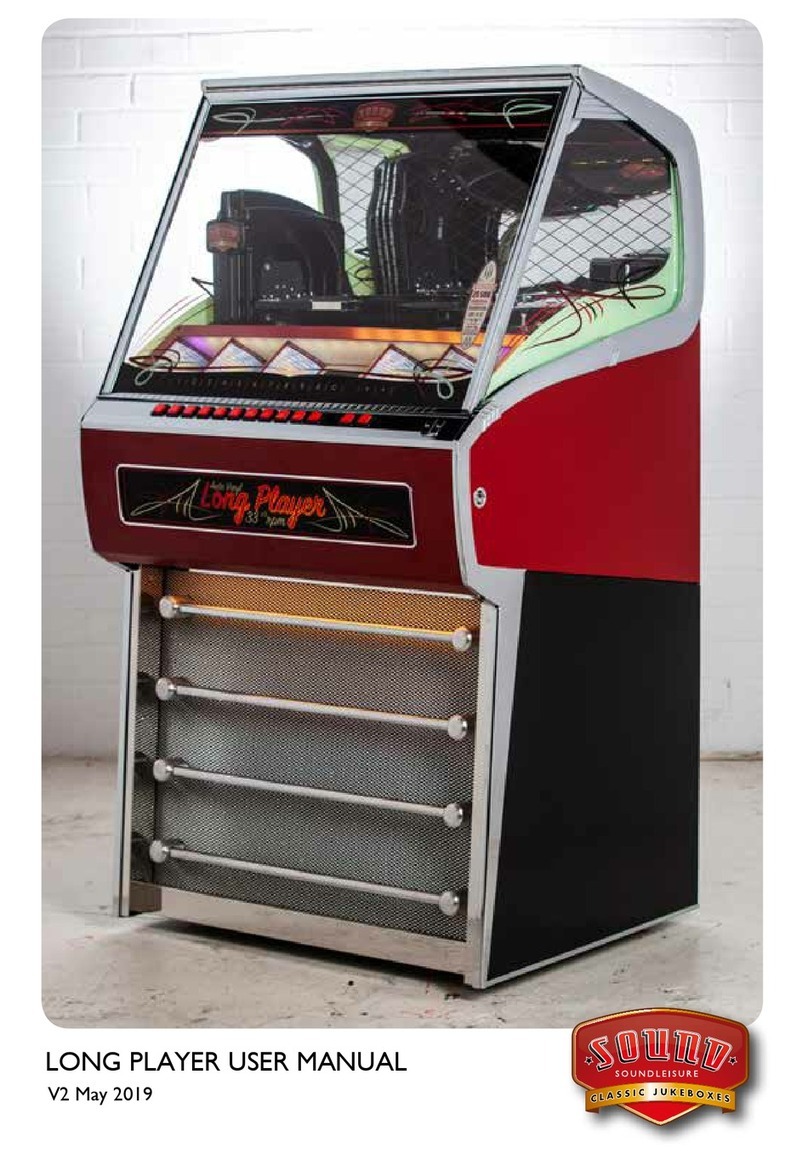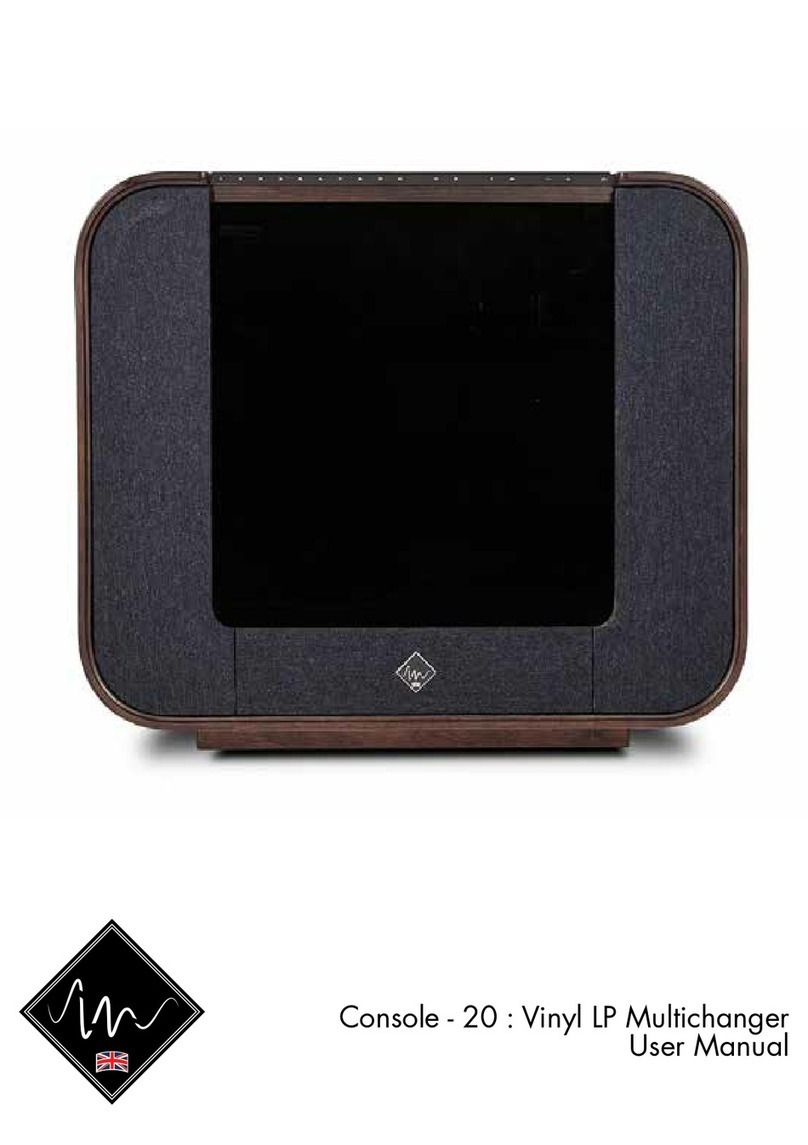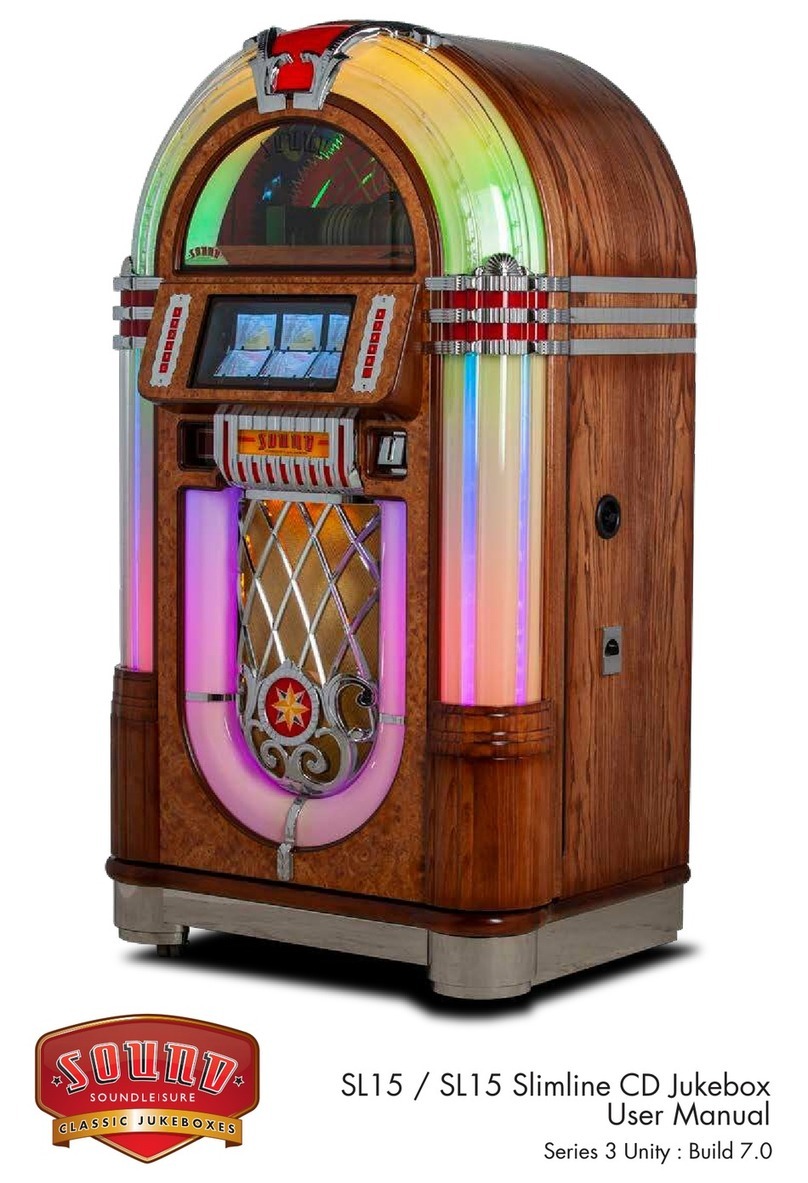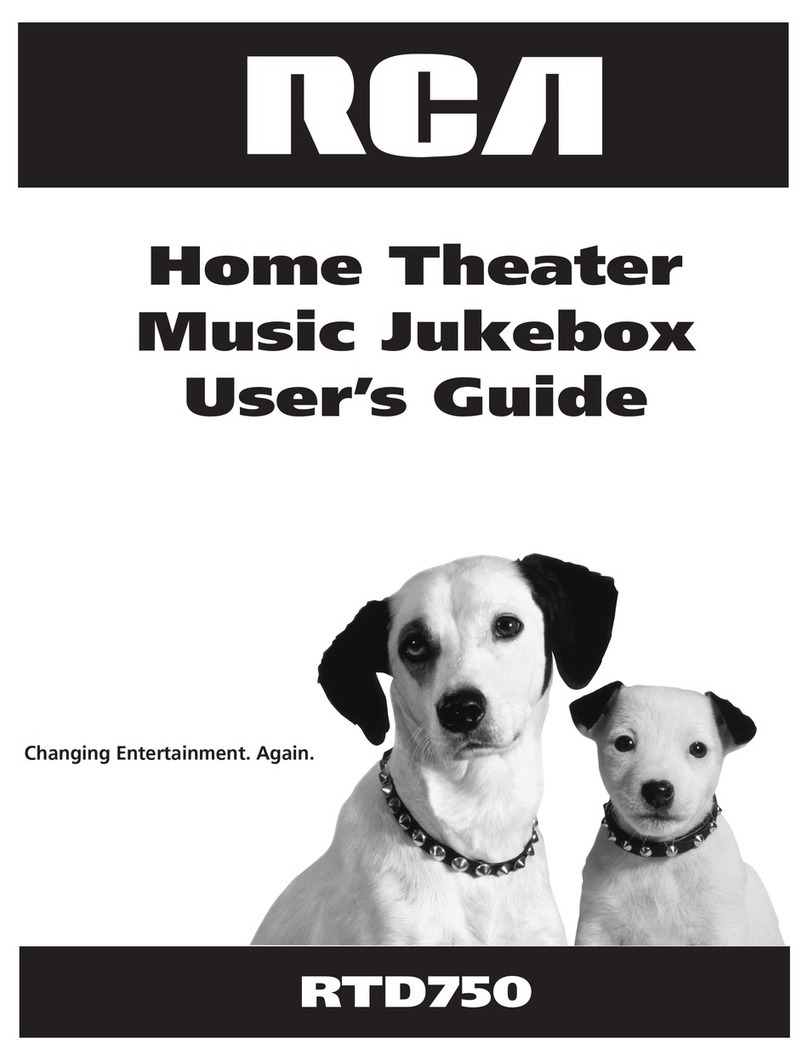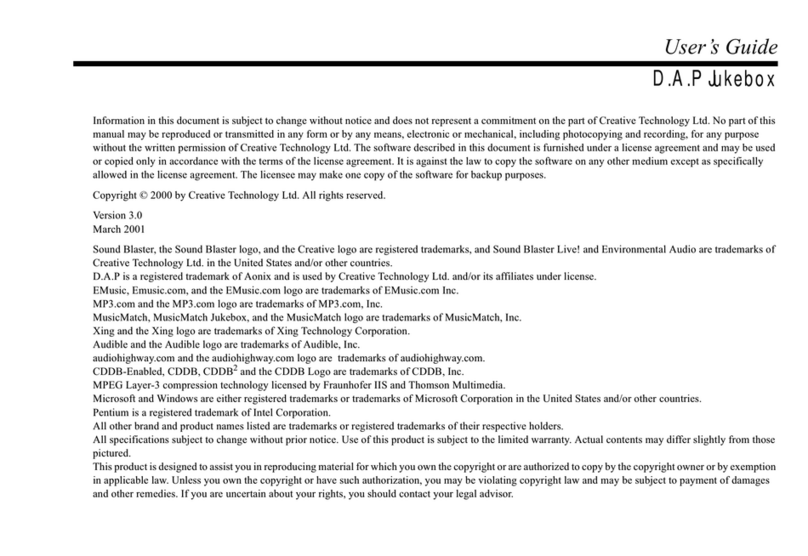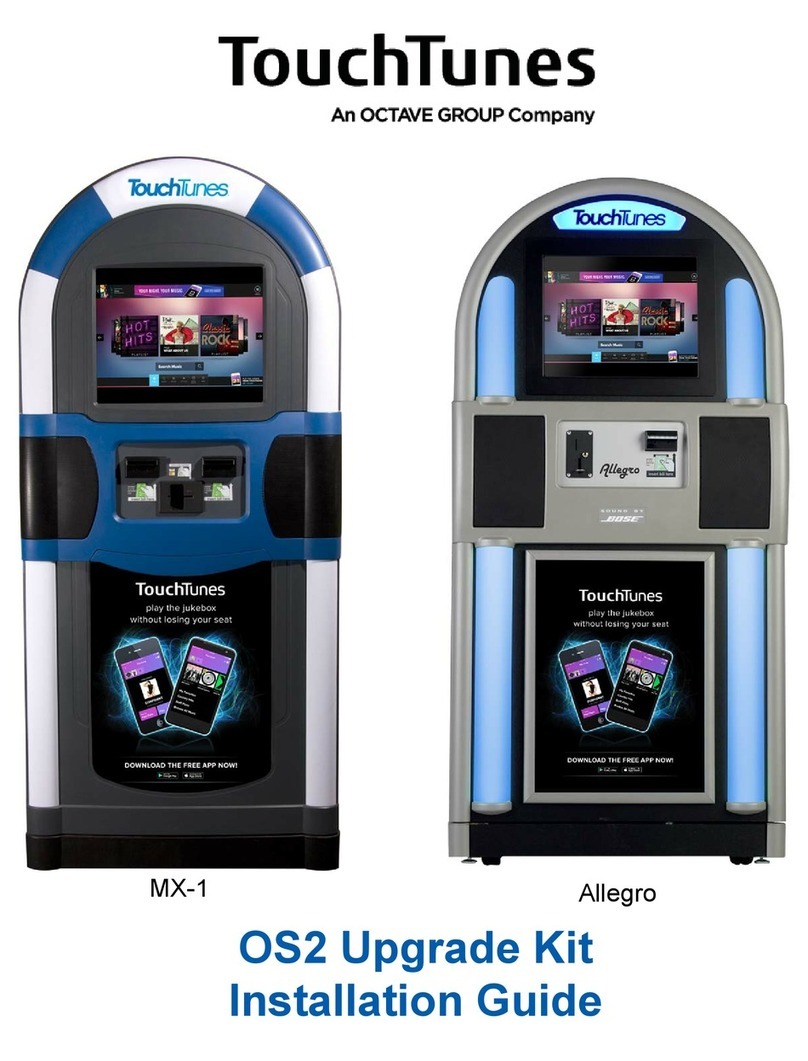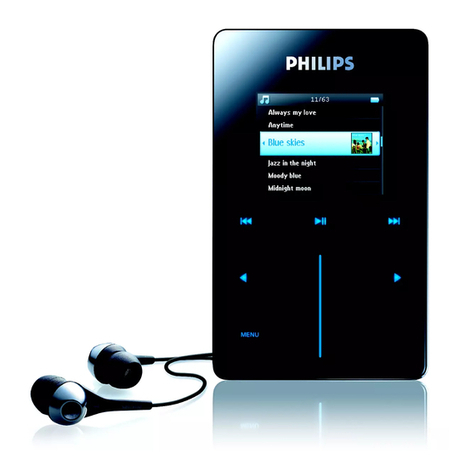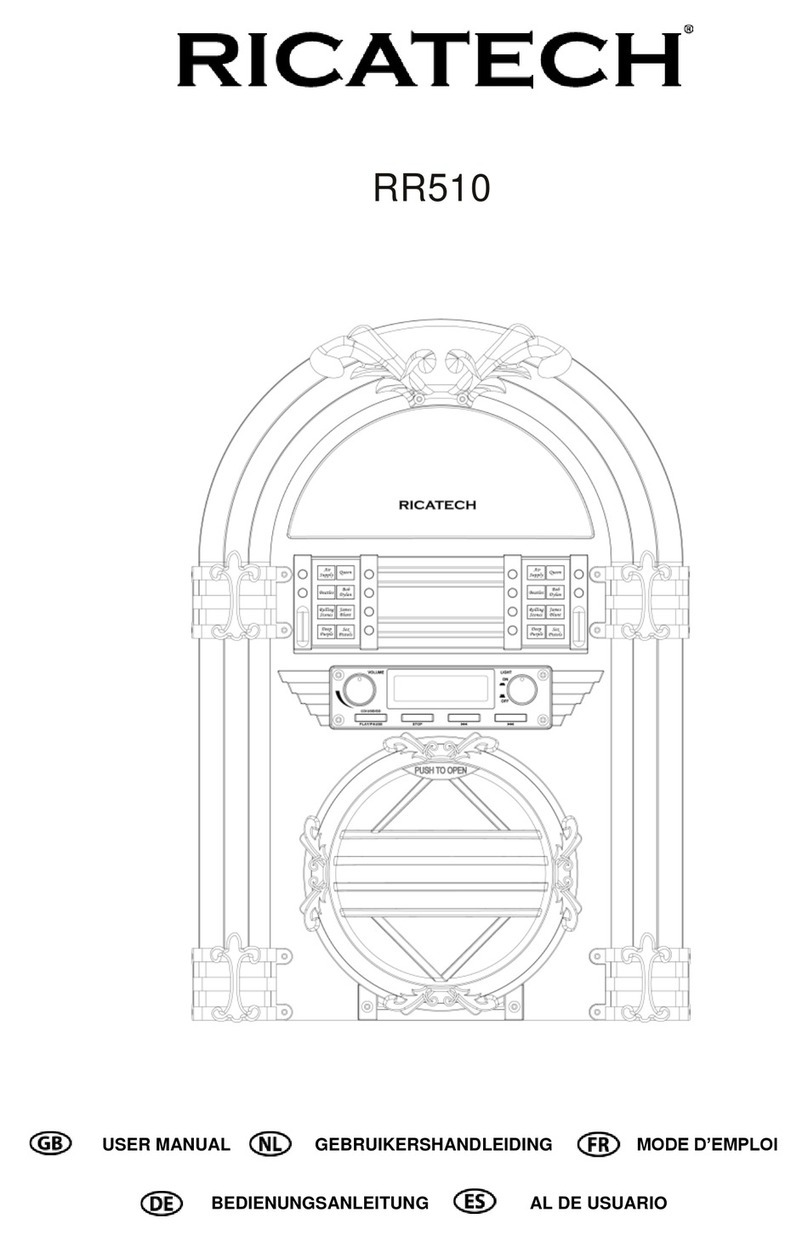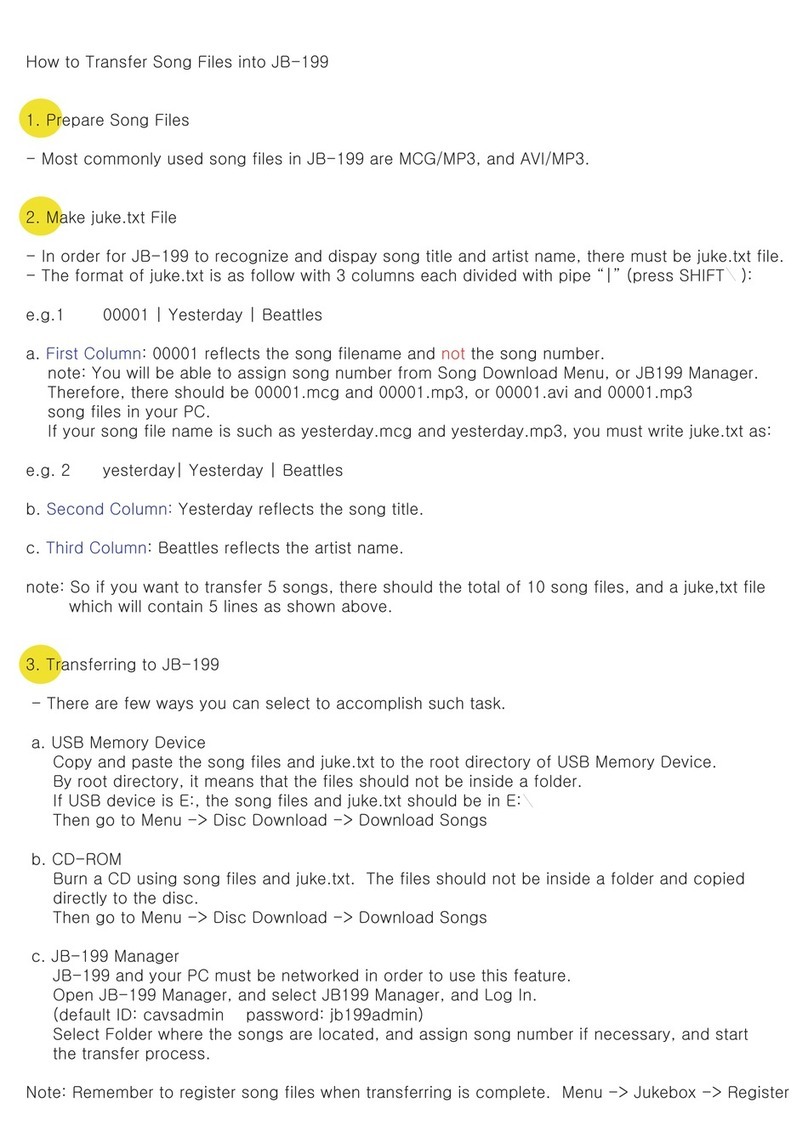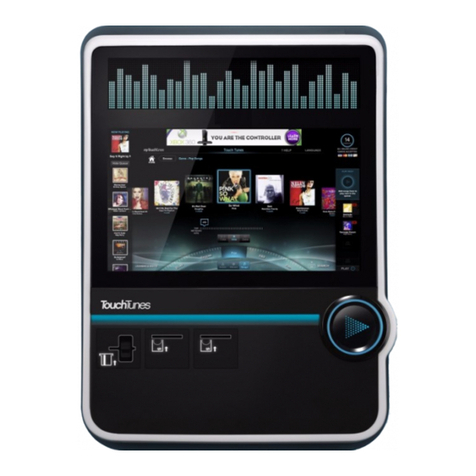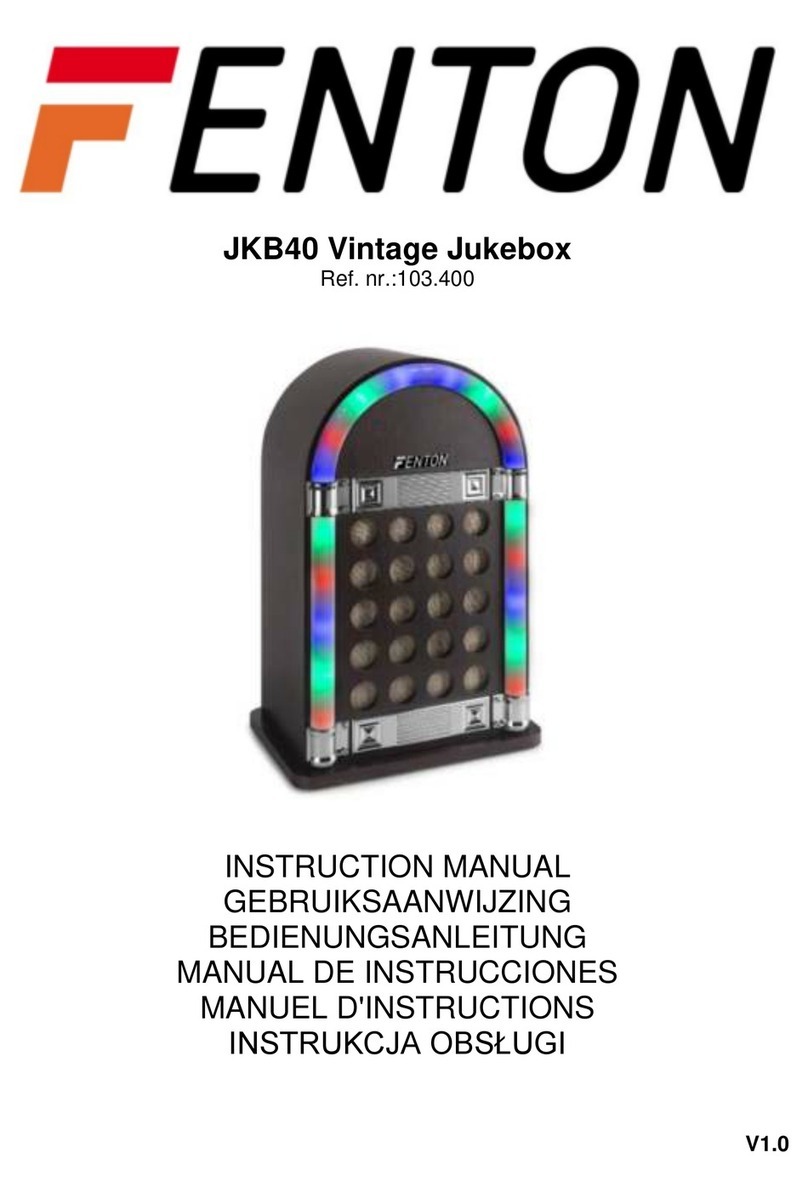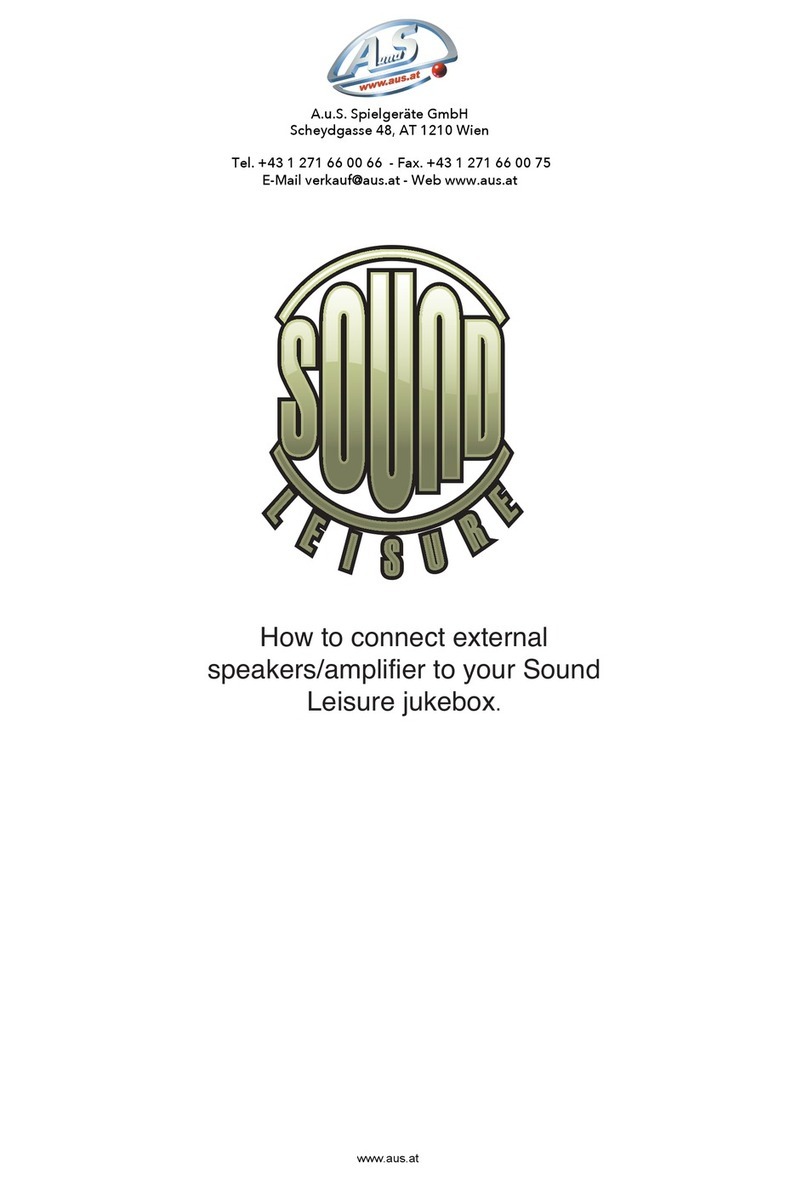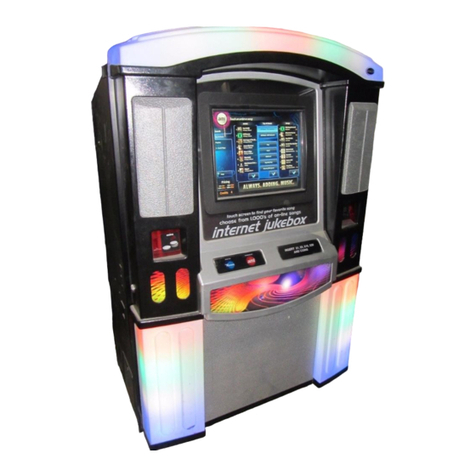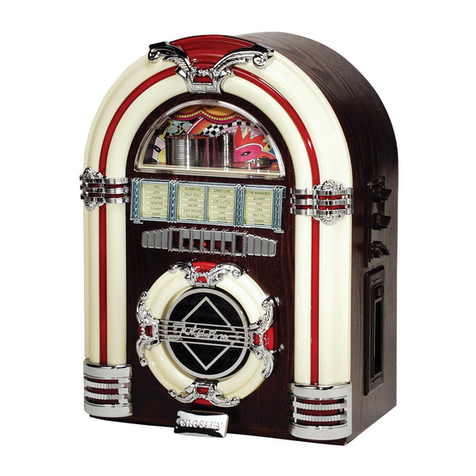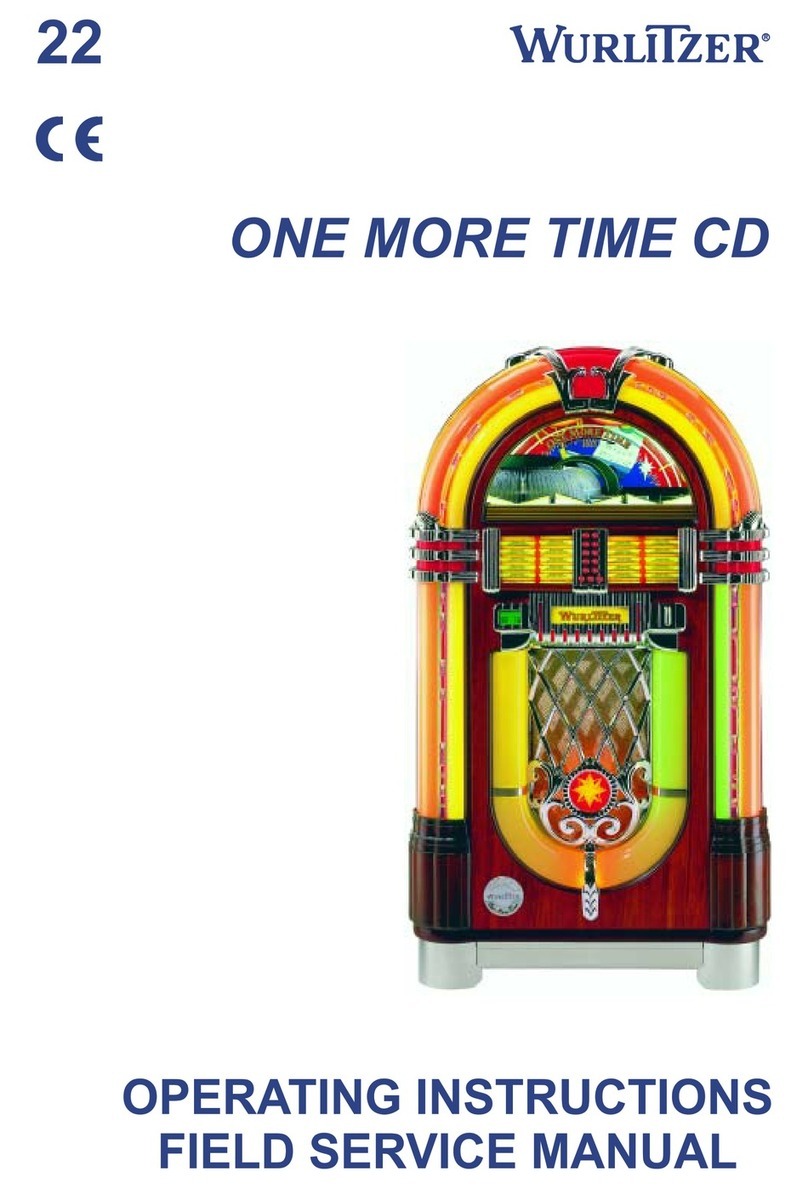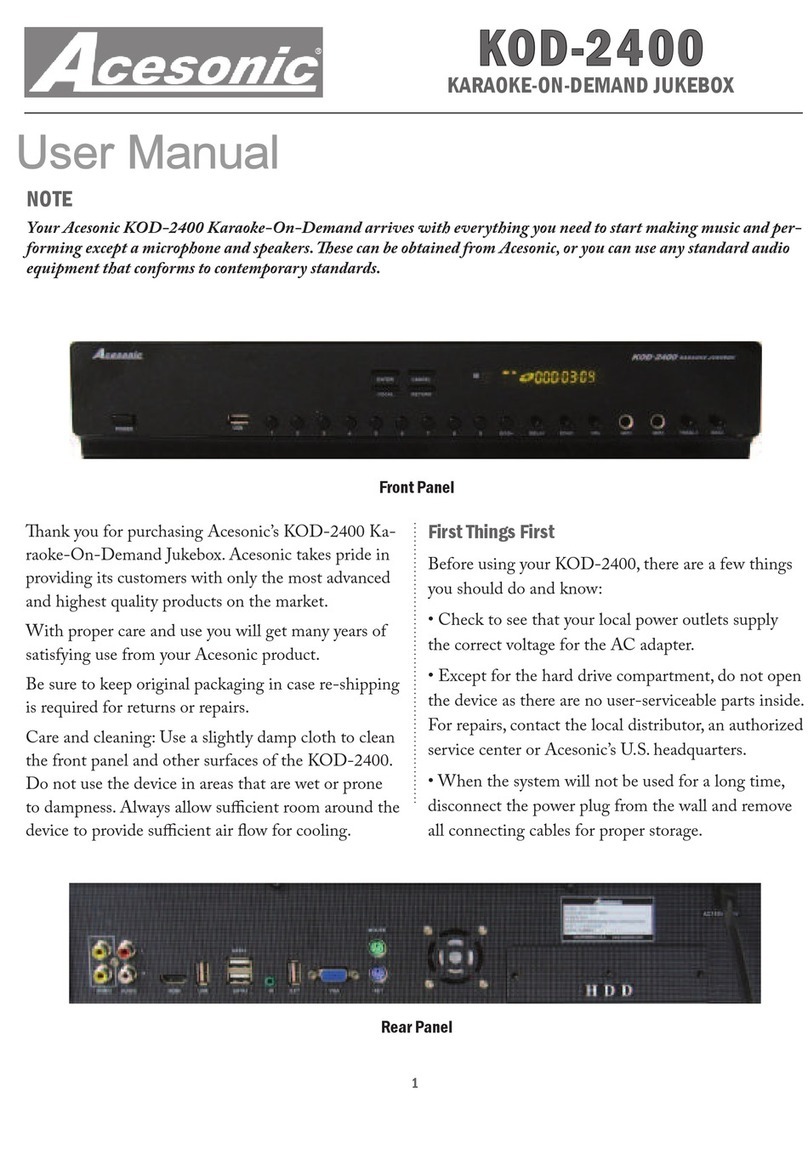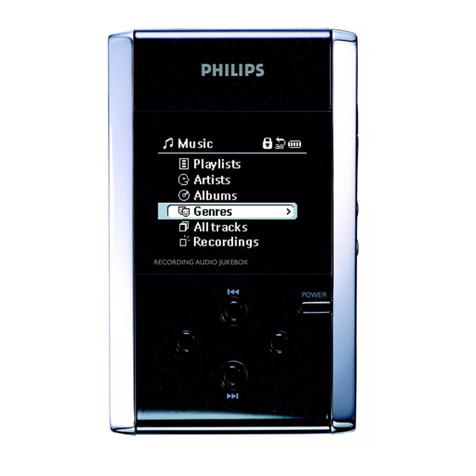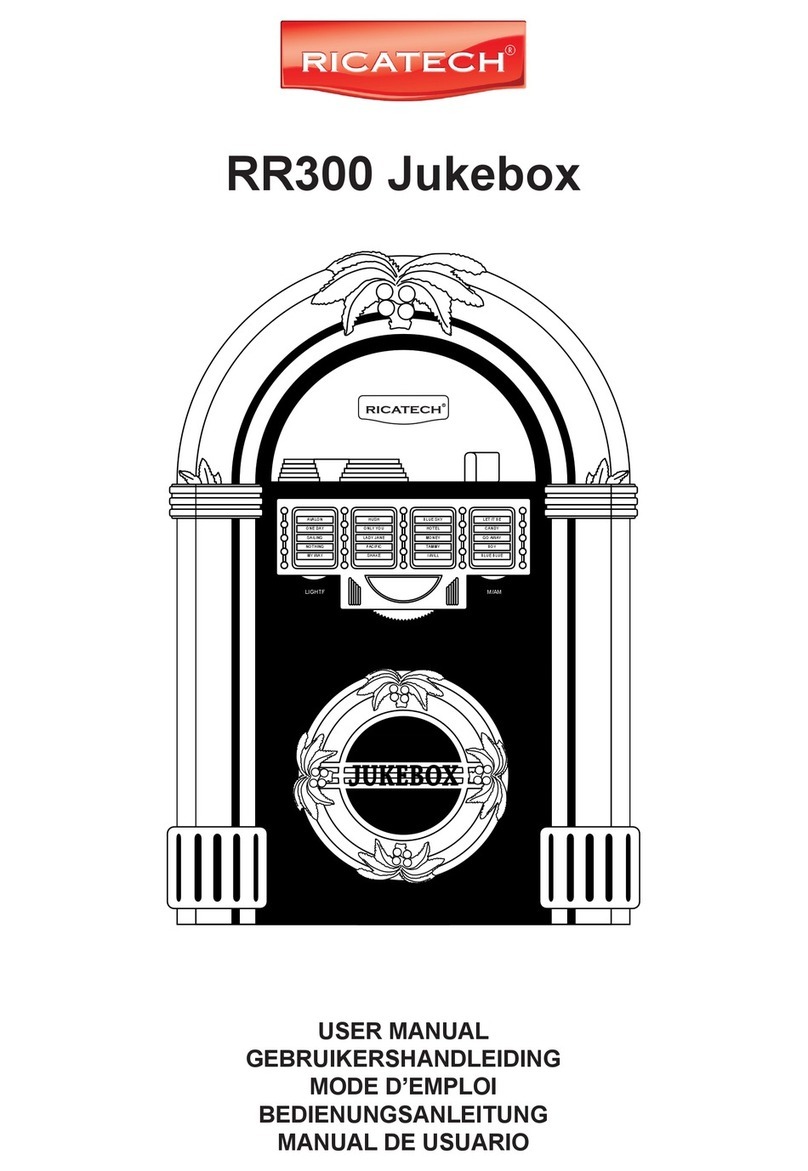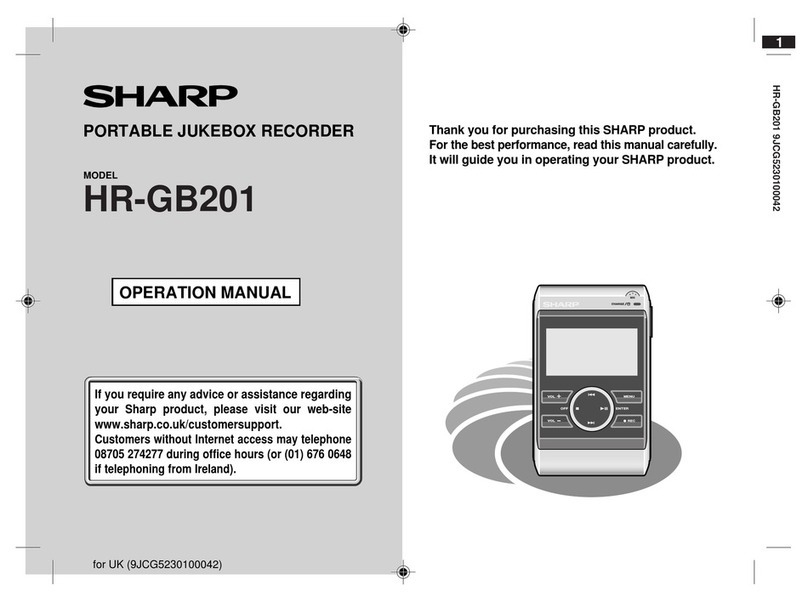CONTENTS
Page No.
1. Introduction .................... .......... .......... ......... ................1
2. System Features............. .......... .......... ......... ................1
3. Installation Requirements......... .......... ......... ................2
3.1 Minijook.................. .......... .......... ......... ................2
3.2 Wallbox.................. .......... .......... ......... ................3
3.3 System Connection Details.......... ......... ................ 3
3.4 Cable Requirements......... .......... ......... ................3
3.5 Meters.................... .......... .......... ......... ................5
3.5.1 Series 3 Wallbox...... .......... ......... ................5
3.5.2 Series 2 Wallbox...... .......... ......... ................5
3.5.3 MiniJook board ACS1067 .. ......... ................5
3.6 Installation of Compact Discs....... ......... ................5
3.7 Selection Display.... .......... .......... ......... ................6
3.8 Making a Selection. .......... .......... ......... ................6
3.9 Specification........... .......... .......... ......... ................6
3.10 Lights .................... .......... .......... ......... ................6
3.11 Motors.................... .......... .......... ......... ................6
3.12 Fuses .................... .......... .......... ......... ................7
3.13 System Reset......... .......... .......... ......... ................7
4. Important Notes ............. .......... .......... ......... ................8
4.1 Compact Disc Care .......... .......... ......... ................ 8
5. MK6 Mono Sound System......... .......... ......... ................ 8
5.1 Warnings................ .......... .......... ......... ................ 9
5.2 MK6 Pre Amplifier.. .......... .......... ......... ................ 9
5.3 MK6 Power Amplifier......... .......... ......... ................ 10
5.4 MK6 Slave Amplifier Output......... ......... ................ 10
5.5 Karaoke ................. .......... .......... ......... ................ 11
5.6 Back Ground Music .......... .......... ......... ................ 11
5.7 Input Connection.... .......... .......... ......... ................ 12
5.8 Controls ................. .......... .......... ......... ................ 13
6. Dil Switch Settings ......... .......... .......... ......... ................ 14
7. Programming ................. .......... .......... ......... ................ 15
7.1 Menu Structure ...... .......... .......... ......... ................ 15
7.2 Moving through Levels...... .......... ......... ................ 16
7.3 Editing a Menu....... .......... .......... ......... ................ 16
7.4 Exiting a Menu ....... .......... .......... ......... ................ 17
7.5 Menu Format.......... .......... .......... ......... ................ 18
